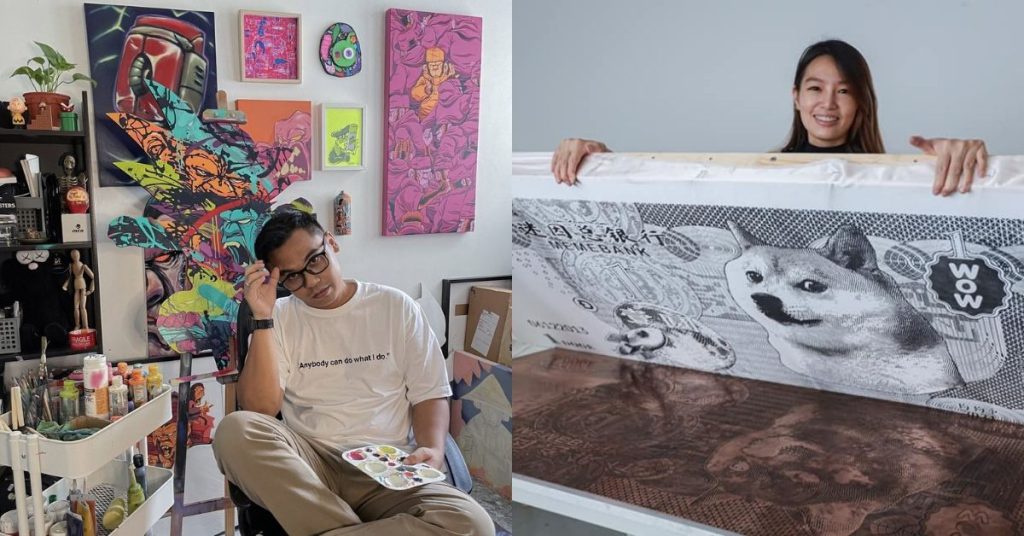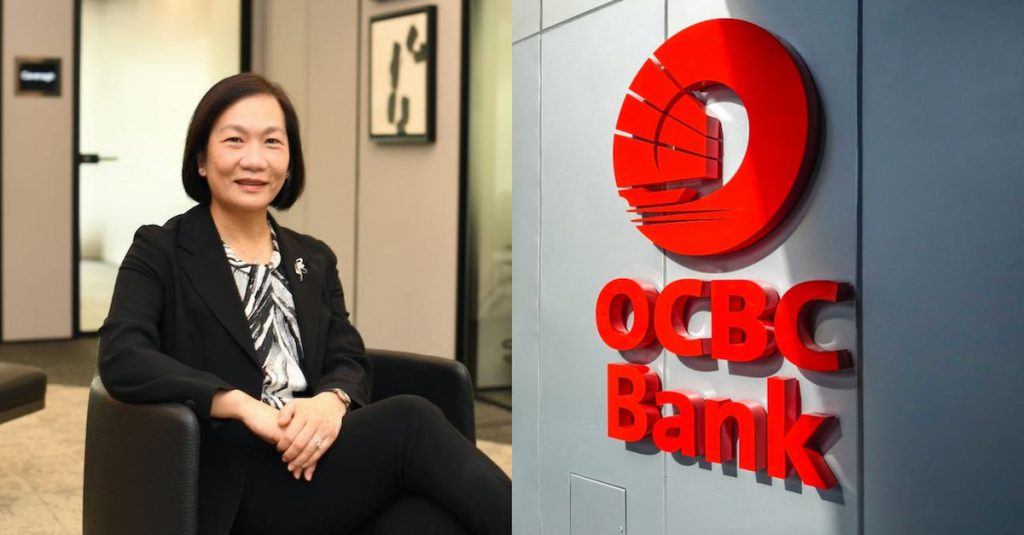ICYMI: Here’s what you should know about NFTs & its influence thus far in Malaysia

Non-fungible tokens (NFTs) first blew up a while ago and like many things online, the trend has reached Malaysia’s shores too.
Globally, supporters see NFTs as the next big thing in art collection, and some of the most famous NFTs are digital artworks.
Cool, but what are NFTs?
Before we proceed, it must be said that being a relatively new concept, NFTs are still subject to much discussion, and oftentimes, they cannot be fully understood in one sitting. It will take time, research, and looking up other perspectives to form your own understanding of NFTs and their uses.
That being said, there is an easy way to begin understanding them.
Fungible items are assets that can be readily interchanged. For example, every RM10 note in your wallet has the exact same value, so it doesn’t matter which RM10 note you use to pay for your lunch. Cryptocurrency is also fungible, as one Bitcoin has the same exact value as another Bitcoin.
However, if something is non-fungible, you can’t readily interchange it with something else because it has unique properties.
So, think of NFTs as a unique digital signature that you can attach to assets. These assets can be in the form of a digital art piece, a video clip, a snippet of a song, or even a Tweet, which are then bought with cryptocurrency or through fiat money (government-issued currency like our Ringgit).
While those are digital examples, NFTs can also be used to represent physical objects like trading cards, which are popular amongst sports and comic fans.
Overall, NFTs can essentially be seen as deeds or titles that prove you have ownership over a certain asset. Supporters argue that NFTs are then more reliable than on-paper deeds because they’re stored on a blockchain.
Wait, what’s a blockchain again?
A blockchain is a digital distributed, decentralised, public ledger that exists across a network. The goal of blockchain is to allow digital information to be recorded and distributed, but not edited.
Visualise each piece of new information being compressed into a block. This block then gets attached to the end of the previous block, and all these blocks are connected via a chain. It’s how the data is recorded and kept in a way that’s traceable.
Furthermore, a blockchain allows data to be spread out among several different network nodes in different locations.
Therefore, if one copy of the data is tampered with, the other copies will show the original records to help pinpoint the node with incorrect information, and a clear and transparent order of events can be given.
This security is why blockchain technology has found its way into various industries including insurance, finance, real estate, voting, and more.
Okay, back to NFTs. What exactly gives these things value?
To put it briefly, it works like all other commodities, whereby there must be demand for it to have value.
One factor that drives an NFT’s value is scarcity. People love having bragging rights, so being able to own a one-of-a-kind NFT satisfies this feeling.
Another factor is an NFT’s utility, whether in the physical or digital world. NFTs aren’t just collectibles, as they can also be used in games or for future opportunities as part of a “club”, for example.
In games, their use is immediate, such as providing characters, power-ups, and more. Meanwhile, some NFTs can be “tickets” or “memberships” to exclusive events, benefits, etc., with one example of this use shown by the Bored Ape Yacht Club which sells merch, organises social events, and even a yacht party for members.
The provider of the object that the NFT is tethered to also matters. For example, people will be more likely to place more value on a Marvel-made NFT of an MCU character than on an NFT of that character drawn by a non-Marvel affiliated artist. It’s similar behaviour to why people prefer to buy from popular brands.
So technically, anything can be an NFT, but it may not necessarily be a valuable one that people will buy.
Tell me the pros and cons of NFTs.
As time goes on and we learn more about NFTs, it’s likely that their pros and cons will change. For now, however, these can be simplified too.
The pros:
- For artists, NFTs can be a way to earn more income. NFT’s current popularity provides opportunity for exposure, and artists making NFTs are able to access a market beyond art dealers and other elite groups.
- For owners, NFTs are a digital signature of ownership that cannot be overridden. Even if an artist produces two artworks that are identical in nature, both digital assets will have a special “serial number” attached to it to prove ownership of each one. Therefore, the NFT you own is still unique in its own right.
The cons:
- For artists, the “gas fees”, which are the costs of transactions made on the platform the NFT is hosted on, can be costly. This is because the fees fluctuate based on supply and demand, and if an NFT is sold for just slightly higher or equal to the price of the gas fee, the artist may earn little or even incur losses.
- For owners, ownership of an NFT does not mean you own the copyright of the asset. This means you can’t control its distribution or duplication.
These are just a few of the main pros and cons, with another debate surrounding NFTs being their impact on the environment. Blockchain technology in general has a high energy cost and carbon footprint due to the supercomputers needed for “minting” (turning a digital file into an asset on the blockchain) an NFT.
However, there has been recent news of a Canadian tech company claiming that it has developed a self-sustainable system whereby oil waste is turned into environmentally-friendly energy that powers crypto mining (the creation of blockchain blocks).
It’s still early days, but it just goes to show that what we know of NFTs today may very well be different by tomorrow.
How are NFTs doing in Malaysia?
Well, based on the news, pretty good, it seems. Not only do we have individual artists like Red Hong Yi, Katun, Namewee, and more, making thousands to millions of Ringgit by selling NFTs, but we’ve also seen large companies get in on the hype, like Kadokawa Gempak Starz with its NFT card pack sales.

We also have Malaysia based NFT marketplaces like Pentas and TRART to facilitate the transaction of NFTs. Safe to say, it’s a growing trend in Malaysia too, and the possibilities of its growth seem endless.
However, anyone looking to get into creating or buying NFTs should definitely carry out their own research to understand as much as possible before making an investment.
This is important to protect oneself against risks because NFTs are not yet regulated in Malaysia. Laws are slow to catch up with trends, with the US just recently announcing that it will now regulate the purchase, sale, and creation of NFTs.
Will this be the trajectory we see in Malaysia as well?
If NFTs are eventually regarded as securities (a tradable financial asset), they will come under the purview and jurisdiction of the authorities who regulate securities, such as the Securities Commission Malaysia (SC). Until then, it seems like a relatively open market.
- Read more of what we’ve written on NFTs, blockchain, and crypto here.
Also Read: COVID-19 has driven the need for secure online signatures, which is this M’sian team’s forte
Featured Image Credit: Katun / Red Hong Yi
S’wakian makeup artist of 13 years diversifies by handmaking intricate hair adornments

As the saying goes, do what you love, you’ll never have to work a day in your life. Having many friends in the creative line, I find that the quote is particularly true for those in the arts. Entrepreneurs also fall into this category; their passion for something is often so great that they can dedicate all their time, energy, and money to it.
Joanne Tang is someone who embodies the description above. She’s been a freelance makeup artist for 13 years, specialising in bridal makeup and creating backdrops for photoshoots.
“I am someone who has been very passionate about arts and crafts since I was a little girl, so going into the makeup industry was a no-brainer as it has allowed me to flourish and thrive under a creative environment,” Joanne shared in our interview.
Styling and creating different looks on each client was where she derived enjoyment. To her, it felt like drawing on a blank canvas each time. In 2019, Joanne decided to take her craft one step further, and launched a hair accessories brand named Orna.Company (Orna.Co), short for ornaments.
A delicate craft
All the way from Sarawak, Orna.Co retails handmade trinkets in the form of hair accessories that are fitting for special events or an everyday adornment. On the brand’s Instagram and Shopee store, you’ll find hand-sewn headbands with floral or feathery designs, elegant flower crowns, and delicate hair pins.
Joanne started Orna.Co in her home along with 2 relatives as their side hustle, since they each have to balance full-time jobs.
To manage higher volume orders, the accessories are made in advance in a studio they’ve moved into, ahead of product launches to ensure that customers can purchase ready-made stocks. As for custom orders, the accessories require at least a month’s notice, depending on the design.

The self-taught crafter shared that her main challenge in creating these pieces was sourcing her materials, which are imported from around the world. Looking to nature for inspiration, each item is designed and handmade from scratch.
Mastering the tricky technique of putting pieces together was her other stumbling block, as they consist of very delicate materials.
Overall, it takes the team 4-5 hours to make each piece. “Depending on the design; we can produce about 8 pieces a day, and depending on the season, we sell around 50-80 pieces a month,” added Joanne.
Priced between RM158-RM258 for the headbands and RM135-RM195 for hairpins, I found the products rather costly. But seeing that some of the accessories include materials like rhinestones and crystals that take up to 5 hours to put together, the cost seemed to add up.
Joanne confirmed this, and reiterated that she sources the highest quality materials from various countries. “We do, however, try to price it as fairly as possible so that our products are able to reach a wider audience,” she stated.
Feeling pretty, even at home

According to the product descriptions on Orna.Co’s Shopee page, the accessories are heavily marketed towards customers looking for adornments to wear during bridal, maternity, and event photoshoots.
On top of that, Joanne’s also catering to the mass market of women. So far, she reported that her customers have been in line with these projected groups.
“Most of our custom-made wedding hair pieces are ordered by younger brides (aged between 23-40 years old), while our mass market product caters to women of all ages,” Joanne shared, adding that there’s been a 50:50 ratio of buyers from each group.
“We would love to get more younger ladies on board and are excited to share more with them.”
Due to the pandemic and its effect on events, there seems to have been a rise in home weddings, with brides opting to go the less elaborate route in terms of decor, attire, etc. So, I asked Joanne if she saw this trend cause a drop or rise to sales too.
She replied that Orna.Co’s sales did drop slightly for its wedding pieces, and the team focused more heavily on pushing the sales for their mass-market products. “[This includes] our Wildflowers and Ballerina series, where our customers can don headbands and feel pretty even at home,” explained Joanne.

Similarly, Joanne’s makeup work also came to a halt during the MCO, but she saw it as a blessing in disguise as she got to focus more heavily on building Orna.Co during this time.
More variety for more people
As a small startup, Orna.Co has mostly been relying on social media marketing and ads to acquire more customers at lower cost.
Brand collaborations and influencer sponsorship can also be one way for small businesses online to gain attention. Although Orna.Co is open to the idea of them, Joanne shared that the team has yet to make any plans or engagements.
Because Orna.Co is a side hustle, this makes sense, as the team of 3 may not have the resources or time to engage with such methods. Joanne even shared that marketing and creating content on social media is one of the team’s biggest challenges.
If growing the brand’s presence is a goal for the team, perhaps it would be necessary for Orna.Co to hire a dedicated branding or social media manager to handle these tasks.
But in the meantime, Joanne told us that they will be focusing on diversifying their product range to have different variations of accessories including earrings too.
Also Read: COVID-19 has driven the need for secure online signatures, which is this M’sian team’s forte
Featured Image Credit: Joanne Tang, owner and founder of Orna Company
S’pore BNPL firm Pace raises US$40M in Series A to fuel Asia expansion and grow user base

Pace, a Singapore-based fintech solution company that offers ‘Buy Now, Pay Later’ (BNPL), announced today that it had raised US$40 million in its Series A investment round.
Investors that joined the round include UOB Venture Management (Singapore), Marubeni Ventures (Japan), Atinum Partners (South Korea), AppWorks (Taiwan), and a series of family offices from Japan and Indonesia.
Previous investors, Vertex Ventures Southeast Asia, Alpha JWC, and Genesis Alternative Ventures also participated in the round.
Following this investment round, the company is now the fastest-growing multi-territory BNPL player from Singapore.
Pace took only a year to grow into a Pan-Asian BNPL provider and is on track to hit Gross Merchandise Value run rate of US$1 billion in 2022.
According to the company, the new funding will go towards expanding technology, operations, and business development. It aims to grow its user base by 25 times over the next 12 months.
“The region is expected to become the world’s fastest-growing BNPL market, and this funding supports Pace in achieving its mission of democratising financial services for all, by helping us pave our expansion into Japan, Korea and Taiwan,” said Turochas ‘T’ Fuad, founder and CEO of Pace.
Out’pacing’ their competitors

Launched in 2021, Pace allows consumers to split their purchase bills into three equal interest-free payments over 60 days through an omnichannel experience that helps them spend sustainably.
It has successfully grown its overseas operations by working closely with regulators and adapting ultra-local approaches, such as integrating frequently used in-market payment methods to build resonance with merchants and shoppers.
To date, Pace has more than 3,000 points of sale across the region. This is driven by Pace’s ability to increase overall sales by up to 25 per cent by leveraging local customer insights while driving repeat purchases from Pace’s fast-growing base of users.
Pace aims to create financial inclusion for consumers in the region by helping them take control and shop on their terms while also helping merchants meet the increasing consumer demand and scale sales efficiencies.
With regards to future plans, the BNPL provider will continue to replicate a hyperlocal framework as it goes live in new countries.
Featured Image Credit: Wantedly/ Pace
Also Read: S’pore firm ShopBack acquires hoolah to accelerate BNPL offerings to merchants and shoppers
OCBC CEO recognises crypto potential, might be second bank in S’pore to set up crypto exchange

In an interview with Bloomberg Television last Friday (November 19), OCBC chief executive officer Helen Wong revealed that the bank is considering to set up a crypto exchange.
At the end of last year, Singapore-based OCBC had US$121 billion in assets under management, making it the second largest bank in Southeast Asia.
“We are looking at it and seriously there are some work being done in the bank,” said Wong. “If you say we are looking at it, it is very much in addressing customer needs, but in a safe manner. We want to help them to recognise the investment and how to handle it.”
Wong highlighted concerns surrounding the digital assets, including the safety of transactions given the anonymous nature of the sector.
She further shared that although it’s worth studying crypto technology due to its potential to boost efficiency, the bank won’t rush into the sector just because of its popularity.
Separately, Aditya Gupta, head of digital at OCBC Bank, told Regulation Asia that OCBC is “actively exploring” partnerships to enter the crypto space.
Singapore is trying to establish itself as a global crypto hub, attracting many new firms even while the city-state frowns upon cryptocurrencies as investments for retail traders.
OCBC’s rival DBS launched a crypto exchange in December 2020. DBS Vickers, the bank’s brokerage arm, received a license to offer crypto services from the Monetary Authority of Singapore in October.
It also has plans to expand its digital exchange — which includes trading services for cryptocurrencies — to retail individuals next year.
Globally, a rising number of banks, including Goldman Sachs and JPMorgan have started offering crypto-futures trading.
Featured Image Credit: OCBC / The Fifth Person
Also Read: Coinhako first S’pore non-bank crypto exchange to get in-principle approval to offer DPT services

